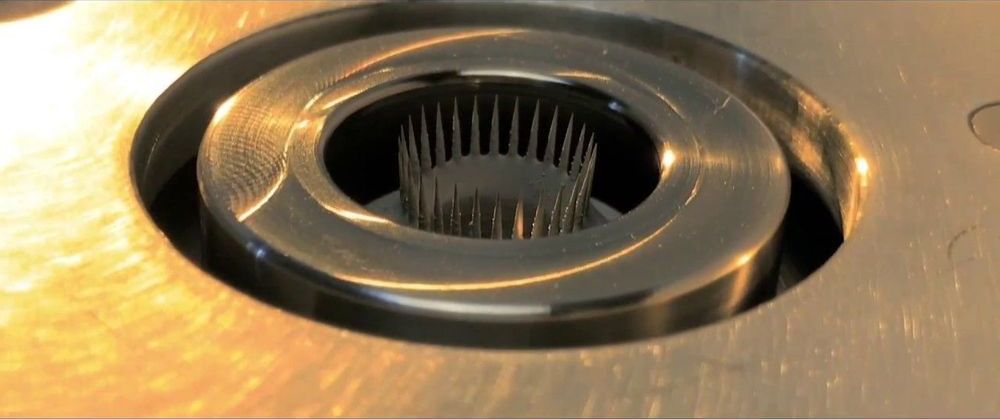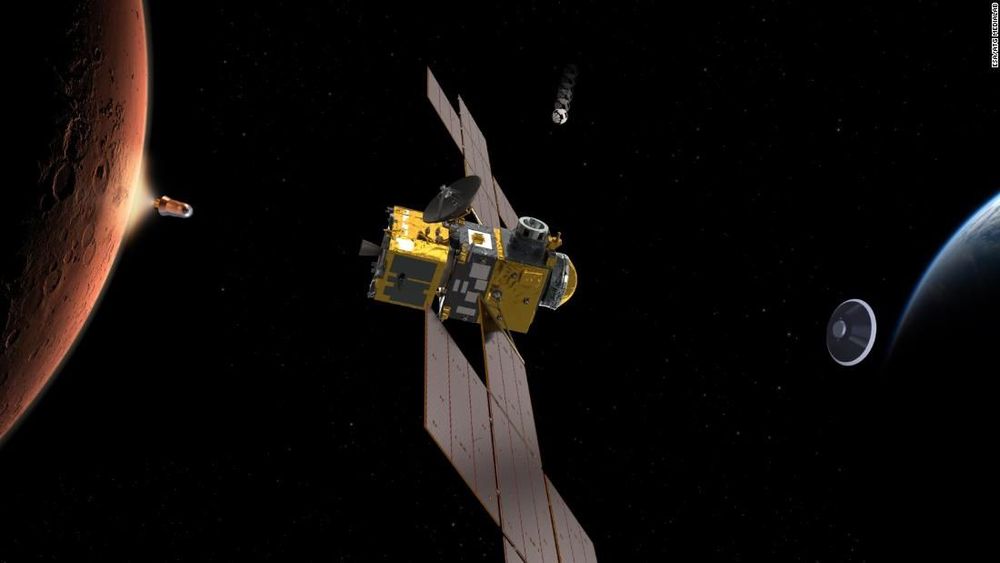Page 7606
Jun 16, 2020
Quantum Satellite Links Extend More Than 1,000 Kilometers
Posted by Derick Lee in categories: computing, encryption, internet, quantum physics
Now, the same researchers have achieved their goal of entanglement-based quantum cryptography using the Micius satellite. The scientists, who detailed their findings online in the 15 June edition of the journal Nature, say they again connected two observatories separated by 1,120 kilometers. But this time, the collection efficiency of the links was improved by up to four-fold, which resulted in data rates of about 0.12 bits per second.
A space-based, virtually unhackable quantum Internet may be one step closer to reality due to satellite experiments that linked ground stations more than 1,000 kilometers apart, a new study finds.
Quantum physics makes a strange effect known as entanglement possible. Essentially, two or more particles such as photons that get linked or “entangled” can influence each other simultaneously no matter how far apart they are.
Continue reading “Quantum Satellite Links Extend More Than 1,000 Kilometers” »
Jun 15, 2020
Researchers create first room-temp ‘magnon switch’ with industrially useful properties
Posted by Quinn Sena in categories: computing, materials
Scientists at the National Institute of Standards and Technology (NIST) and the Massachusetts Institute of Technology (MIT) have demonstrated a potentially new way to make switches inside a computer’s processing chips, enabling them to use less energy and radiate less heat.
The team has developed a practical technique for controlling magnons, which are essentially waves that travel through magnetic materials and can carry information. To use magnons for information processing requires a switching mechanism that can control the transmission of a magnon signal through the device.
While other labs have created systems that carry and control magnons, the team’s approach brings two important firsts: Its elements can be built on silicon rather than exotic and expensive substrates, as other approaches have demanded. It also operates efficiently at room temperature, rather than requiring refrigeration. For these and other reasons, this new approach might be more readily employed by computer manufacturers.
Jun 15, 2020
This Mini Ion Thruster Is Adorably Tiny
Posted by Quinn Sena in categories: energy, satellites

Its performance is equally microscopic, only generating anywhere between 10 to 400 micronewtons — a tiny fraction of the power of a toy rocket.
But in space, even that low amount of power can allow satellites to hold their positions, and even gradually deorbit to make sure they’re out of harm’s way and don’t become space debris.
Continue reading “This Mini Ion Thruster Is Adorably Tiny” »
Jun 15, 2020
New Algorithm Is a Lot Like the “Enhance!” Feature In “CSI”
Posted by Quinn Sena in category: information science
Jun 15, 2020
NASA is hiring someone to help bring Martian samples back to Earth
Posted by Quinn Sena in categories: robotics/AI, space travel
NASA is planning to bring Martian samples back to Earth — and they’re looking for someone to lead the mission.
The Mars Sample Return (MSR) program, set to take place over the next decade, aims to collect samples of Martian rock, soil, and atmosphere for analysis and testing on Earth.
NASA has previously sent several rovers to Mars, but no program or robot has ever been able to bring back samples, which could give researchers new insights into the Red Planet.
Jun 15, 2020
Green glow detected on the Red Planet
Posted by Quinn Sena in categories: particle physics, satellites
A similar glow is sometimes seen by astronauts on the space station when they look to the Earth’s limb.
The glow comes from oxygen atoms when they’re excited by sunlight.
The phenomenon has long been predicted to occur on other planets, but the Trace Gas Orbiter (TGO) — a joint European-Russian satellite at Mars — is the first to make the observation beyond Earth.
Jun 15, 2020
Recovering the Lost Apollo 10 LM Software
Posted by Saúl Morales Rodriguéz in categories: internet, space

Mike Stewart was able to recover the previously lost Apollo 10 LM software, as flown (also known as Luminary 69 Rev 2). He shows us how he did it, which, fair warning, is a pretty technical hack. And contrary to (yet another) internet myth, the flown software would have been perfectly capable of landing Apollo 10 on the Moon.
T-Shirt, Hoodie, Sticker and Mug with the “It Lands We Checked” logo:
Shirt: https://teespring.com/it-lands-we-checked?pid=211
Hoodie: https://teespring.com/it-lands-we-checked?pid=227
Sticker: https://teespring.com/it-lands-we-checked?pid=794
Mug: https://teespring.com/it-lands-we-checked?pid=658
Continue reading “Recovering the Lost Apollo 10 LM Software” »
Jun 15, 2020
New Horizons Is So Far From Earth, It Shows Us How Stars Look Different Out There
Posted by Saúl Morales Rodriguéz in categories: robotics/AI, space
In July 2015, the New Horizons spacecraft made history when it became the first robotic explorer to conduct a flyby of Pluto. This was followed by another first, when the NASA mission conducted the first flyby of a Kuiper Belt Object (KBO) on 31 December 2018 – which has since been named Arrokoth.
Now, on the edge of the Solar System, New Horizons is still yielding some groundbreaking views of the cosmos.
For example, we here on Earth are used to thinking that the positions of the stars are “fixed”. In a sense, they are, since their positions and motions are relatively uniform when seen from our perspective.
Jun 15, 2020
Mars Exhibits ‘Green Glow’ in Atmosphere, Just Like Earth
Posted by Saúl Morales Rodriguéz in categories: particle physics, space
The European Space Agency (ESA) has just announced that its ExoMars Trace Gas Orbiter (TGO) has identified a long-suspected “green glow” around Mars. The green glow is due to the interaction of sunlight with atoms and molecules in Mars’ atmosphere. To date, we’ve only observed the phenomenon around one other planet: Earth. Now, the scientists who’ve discovered the Red Planet’s green glow say it could help us better understand the planet’s atmosphere. And how to land safely on its surface.
Futurism reported on the finding, which was outlined in a paper recently published in the journal, Nature. According to the paper, this discovery marks the first time scientists have observed the “day glow” and “night glow” that generate the “green line” around Earth around Mars. Or any other planet. The discovery also stands as long sought-after confirmatory evidence of predictions regarding the Martian atmosphere, which date back 40 years.
















